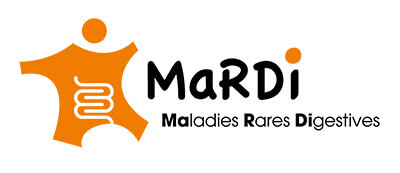Definition and clinical description
Ulcerative colitis (UC) is an inflammatory intestinal disease, which may affect the rectum and colon. The other parts of the digestive tract are never affected by the inflammation.
It is a chronic disease with different phases of activity (flare-ups) of varying intensity, alternating with periods of complete remission. During periods of activity, inflammation affects the mucosa, i.e. the inner part of the intestinal wall. The disease always affects the rectum and may “climb” up the colon, in one piece, without leaving an interval of healthy mucosa.
Depending on the extent of the lesions in the colon, there are three types of UC:
- Distal, or left-sided, colitis (60% of cases), which affects the rectum (rectitis) and the sigmoid colon (rectosigmoiditis);
- Pancolitis (15%), which affects the rectum and all of the colon;
- Intermediate forms (25%) between the distal and pancolitis forms.
UC is not contagious. There is no direct transmission from one person to another.
Symptoms and prevalence
Clinical manifestations depend on the extent of the disease.
The main manifestations are intestinal. Rectal bleeding is constant. In the distal forms, there is a dysenteric syndrome combining emissions of mucus and blood, inability to defecate despite urgency, and rectal pain without diarrhoea.
Depending on the severity of the flare-up, there may also be abdominal pain, fever and weight loss.
In some cases, certain flare-ups are accompanied by extra-intestinal manifestations: joints, skin, eyes or liver.
The incidence of UC varies from one country to another, but the maximum rates are found in Northern Europe and the USA. In France, the number of new cases each year is between four and five per 100,000 residents. It is not a rare disease in adults, but it is in children.
UC affects both sexes equally.
The average age at discovery of the disease is 34, but it can be revealed at any age.
The causes of the diseases still remain unknown.
Several factors are involved in occurrence of the disease:
- A genetic factor: there is a genetic predisposition to UC. The disease is more frequent is close family members of UC patients than in the general population;
- Environmental factors: UC is less frequent in smokers and very rare in people who have had an appendectomy;
- Immunological factors: anomalies of the immune system have been described with UC. It is currently thought that these different factors are interlinked.
Treatment
There is no curative treatment for UC, but certain medications can be used to reduce inflammation, treat the main symptoms and reduce frequency of flare-ups. In severe forms, surgery may be proposed.
Diagnostic method
Diagnosis of UC is made after an endoscopic exploration of the colon or rectum. Blood and stool analyses are required beforehand in order to ensure that diarrhoea is not due to an infection.
Genetic analysis
UC is not strictly speaking a genetic disease. A genetic predisposition has been noted, in that there are “susceptibility” genes.


